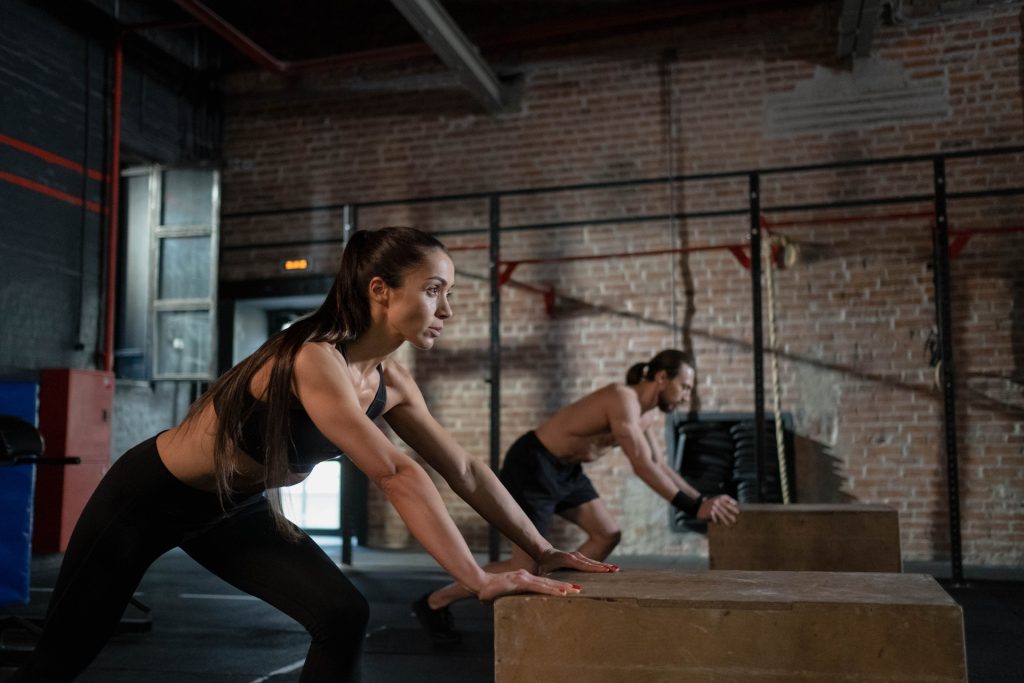Whether you’re new to the gym or an experienced fitness enthusiast, it’s important to have a clear plan in place for your workouts. A well-designed workout plan can help you achieve your fitness goals more efficiently, stay motivated, and prevent boredom or plateaus in your progress. In this article, we’ll discuss the key elements of an effective in-gym workout plan and provide some examples to get you started.

- Determine Your Goals
Before you begin designing your workout plan, it’s important to have a clear understanding of what you want to achieve. Do you want to build muscle, improve your cardiovascular endurance, or both? Do you want to lose weight or improve your overall health? Your goals will inform the type of exercises you choose and the intensity and duration of your workouts.
- Consider Your Fitness Level
It’s also important to consider your current fitness level when designing your workout plan. If you’re new to exercise, it’s important to start slowly and gradually increase the intensity and duration of your workouts over time. This will help you build a solid foundation of fitness and reduce your risk of injury. If you’re more experienced, you may be able to handle more intense workouts and may need to switch up your routine more frequently to continue making progress.
- Choose the Right Exercises
Once you’ve determined your goals and assessed your fitness level, it’s time to start choosing the right exercises for your workout plan. There are many different types of exercises to choose from, including resistance training (using weights or other forms of resistance to build muscle), cardiovascular exercise (such as running or cycling), and flexibility and mobility exercises (such as stretching and yoga). It’s important to include a mix of these types of exercises in your workout plan to provide a well-rounded fitness routine.
Here are some examples of exercises that can be included in your in-gym workout plan:
- Resistance training: bench press, squats, deadlifts, rows, bicep curls, tricep dips, shoulder press
- Cardiovascular exercise: treadmill, stationary bike, rowing machine, stair stepper, elliptical
- Flexibility and mobility: stretching, yoga, Pilates
- Set a Schedule
Once you’ve chosen the exercises for your workout plan, it’s important to set a schedule for when you’ll do them. It’s generally recommended to exercise at least three times per week, with at least one day of rest in between workouts. You may want to schedule your workouts for the same time each day to make it easier to stick to your routine.
- Vary Your Workouts
To prevent boredom and continue making progress, it’s important to vary your workouts over time. This could mean switching up the exercises you do, the intensity of your workouts, or the duration. For example, you might start with three sets of eight reps of each exercise, and then gradually increase to four sets of ten reps as you get stronger. Or, you might try adding in new exercises or increasing the weight you lift as you get more comfortable with your current routine.
- Don’t Forget to Warm Up and Cool Down
Before starting your workout, it’s important to warm up your muscles to prepare them for exercise. This could include dynamic stretches (such as lunges or leg swings), light cardio (such as jogging in place or jumping jacks), or foam rolling. After your workout, it’s important to cool down to help your body recover and prevent muscle soreness.
This could include static stretches (such as holding a stretch for a period of time), light cardio, or foam rolling.
- Monitor Your Progress
To stay motivated and ensure you’re making progress, it’s important to regularly monitor your progress. This could include tracking your workouts in a journal or using a fitness app to track your progress. You may want to record the exercises you do, the number of sets and reps, and the amount of weight you lift. You can also track other measurements, such as your body weight, body fat percentage, or measurements around specific areas of your body. By regularly reviewing your progress, you can see the results of your hard work and make any necessary adjustments to your workout plan.
- Seek Professional Guidance
If you’re new to exercise or have any health concerns, it’s a good idea to seek professional guidance when designing your workout plan. A personal trainer or exercise physiologist can help you create a safe and effective workout plan that’s tailored to your individual needs and goals. They can also provide guidance on proper form and technique to help you get the most out of your workouts and reduce your risk of injury.

In conclusion, an effective in-gym workout plan should be tailored to your individual goals and fitness level and should include a mix of resistance training, cardiovascular exercise, and flexibility and mobility exercises. It’s important to set a schedule, vary your workouts, warm up and cool down properly, and track your progress to ensure you’re making progress and staying motivated. With the right plan in place, you can achieve your fitness goals and enjoy a lifetime of healthy living.











